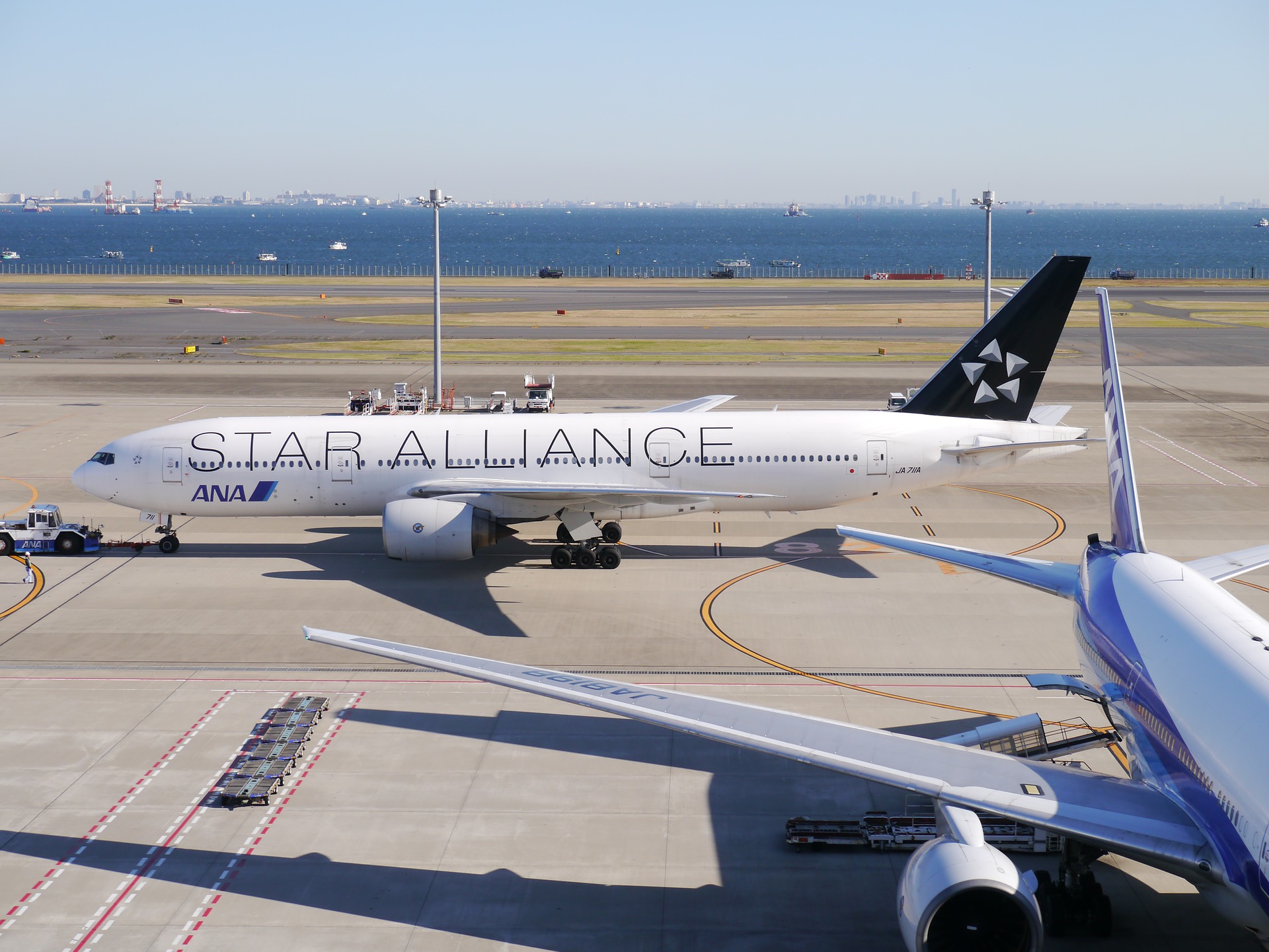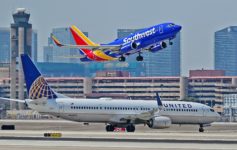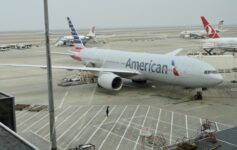I’m eating a little humble pie today…or at least humble mochi. My aviation predictions tend to be accurate, but not on the recent slot awards for Haneda Airport in Tokyo. Still, I question the logic of the DOT.
Late yesterday, the U.S. Department of Transportation tentatively awarded 12 Tokyo Haneda slots to a mix of four different airlines.
I’ve listed all slot requests below. Those in green were approved while those in red were denied.
- American Airlines
- Dallas – DFW – (777-200ER) – Approved
- Dallas – DFW – (777-200ER) – Denied
- Las Vegas – LAS (787-8) – Denied
- Los Angeles – LAX (787-8) – Approved
- Delta Air Lines
- Atlanta – ATL (777-200) – Approved
- Detroit – DTW (A350-900) – Approved
- Honolulu – HNL – (767-300) – Approved
- Honolulu – HNL – (767-300) – Denied
- Portland – PDX (A330-200) – Approved
- Seattle – SEA (A330-900neo) – Approved
- Hawaiian Airlines
- Honolulu – HNL – (A330-200) – Approved
- Honolulu – HNL – (A330-200) – Denied
- Honolulu – HNL – (A330-200) – Denied
- United Airlines
- Chicago – ORD (777-200) – Approved
- Guam – GUM (777-200) – Denied
- Houston – IAH (777-200) – Denied
- Los Angeles – LAX (787-10) – Approved
- Newark – EWR ( 777-200) – Approved
- Washington – IAD (777-200) – Approved
Why I Was Wrong
Delta received 5/6 of its slot pair requests. I had predicted:
Delta will receive two slots, one for Honolulu and one for Seattle. This is because this service change will still leave flights to Narita from both cities. Its other requests will not be priortized since they will lead to cuts from Narita.
Delta’s awards surprised me most because the carrier was upfront about wanting to replace service to Tokyo Narita with service to Tokyo Haneda. Narita is certainly no longer a Delta hub, but it still serves as important airport for local and connecting traffic. Since Delta’s requests from Atlanta, Detroit, and Portland would result in a net gain of zero flights to Tokyo, I figured that those requests would be passed over in favor of requests for additional service to Tokyo or from airports in which a Narita option would remain.
United applied for service from six cities, telling the DOT that it would replace flights to Tokyo Narita with Haneda flights from Chicago, Houston, and Washington. Service from Guam, Los Angeles, and Newark would represent new services and complement existing Narita service. Joint venture-partner ANA plans to continue Narita service from Chicago, Houston, and Washington. Thus, I predicted that United would receive all six slots:
United will receive a slot from all six cities. Three are a given–the new service to Guam, Los Angeles, and Newark. But I think the other three make sense because United does not face competition on these routes and consumers prefer Haneda over Narita. ANA will (presumably) continue to fly from Chicago, Houston, and Washington to Narita, meaning consumers will still have the choice to fly to either Tokyo airport.
Again, I was off. The DOT dismissed Guam because it it is already well-served by Narita:
United’s Guam proposal would require the allocation of a scarce Haneda slot pair to provide short haul flights in a leisure oriented market. While the Department appreciates the benefits that passengers might enjoy with access to the downtown Haneda airport, the large Guam-Tokyo market is already well-served at Narita, and the Department tentatively finds that an allocation here would not represent the best use of a limited Haneda opportunity.
And here were see what I view as the odd logic of the DOT. Well yes, Guam is already served by Narita. But why not Haenda as well? Isn’t the goal to increase flights to Japan, not just shift airports? Why target a “leisure” market? Aren’t all the other city pair awards also “well-served” at Narita? It strikes me as odd that United seems to have been penalized (in Houston as well) for the fact that it planned to maintain service to Narita either directly or via its JV/codeshare partner ANA.
Las Vegas Denied
The DOT also denied American’s requested for a Las Vegas to Haneda slot. I figured this was a sure thing because no other carrier serves this destination nonstop. Here’s why the DOT denied it:
The Department recognizes that Las Vegas is the fifth-largest mainland U.S.-Tokyo market, however, American proposes to offer connections to only five U.S. points over Las Vegas, four of which are being tentatively selected in this proceeding for nonstop U.S.-carrier Haneda service of their own. In view of the potential benefits of the other proposals that the Department is tentatively selecting here, and considering the carrier’s placement of this proposed service as its lowest-ranked priority, the Department has tentatively decided not to make an allocation for American’s Las Vegas-Haneda proposal.
So the DOT recognizes that local traffic between Las Vegas and Tokyo would be substantial. At the same time, it faults American for no longer having a hub in Las Vegas (i.e., limited connections available). I’m not sure why this proposed route is less valuable than another Tokyo to Honolulu flight for Hawaiian or Delta. But AA shares some blame too, as the DOT notes that it ranked Las Vegas as its lowest-priority slot request.
CONCLUSION
My predictions were off…I own up to that here. But I do question the logic of encouraging airlines to cut Narita service in order to serve Haneda. Why not encourage service to both Narita and Haneda, thereby providing more choice to customers on both sides of the Pacific and as a result, better fares?





IAH denied? Well that sucks.
There was no guarantee that airlines would continue serving NRT and HND for any amount of time, so while the applications stated some of the slots would be complimentary to current service i’d imagine that NRT would eventually be cut.
American’s LAS ask was a throwaway bid to hope they got the rest of their asks without forcing the DOT to grant their entire wishlist. They would certainly have been granted any one of their other hubs if they asked. They didn’t ask for another hub because they have no interest in serving Asia outside DFW and LAX.
Is Haneda the floating airport in Tokyo Bay? Also, what are the tradeoffs between the different Tokyo area airports?
Kansai (Osaka) is the artificial island, not near Tokyo. There’s also another major artificial island airport.
Haneda is close by. Think of it as LAX or YUL (Montreal/Dorval/Trudeau). It’s not small so it’s not quite a DCA or LGA. Narita is like if ONT were a huge airport or YMX (Montreal Mirabel). NRT is some far.
In general, the results were fair in my opinion except some bias towards Delta to allow them to pack up from NRT and move to HND.
UA should have gotten Guam and Houston, not LAX.
HA should have gotten the second HNL.
DL should have been denied HNL, PDX.
That’s me, if I were dictator.
Someone over at OMAAT had a good point that DL likely received the greatest number of slots because they don’t have any Japanese alliance partners in SkyTeam whereas both UA and AA have lots of US-Japan routes between them and the other airlines. I’m a DL fanboy, so I’m biased, but that actually makes some legit sense – I think… – so I’m with the outcome. Though I agree with the DOT that HA did not need another HNL route. They aren’t diversified enough to Asia, in my opinion, for them to put all their eggs in a Japan basket. I feel like they’re resting on their laurels somehow. Though I admittedly have no facts to back that up.
To preserve competition, I am not surprised that Delta, who does not have Japanese codeshare partner, awarded most flight frequency to HND by DOT. What I am puzzled is the following;
(1) Why did UAL place LAX a higher priority than IAH in the application for flight frequency? If UAL changed the priority Houston would have awarded HND route. Will ANA switch her NRT-IAH route to HND airport next year, when ANA and JAL will be given 6 daytime frequency each?
(2) PHL is AA’s largest hub at Northeastern US. Why did AA not even bother to ask DOT for a HND frequency? Does AA expect JAL to operate HND-PHL next year? It is simply ridiculous.
That is the nature of airline deregulation and a democracy. The FAA cannot order AA to fly PHL-HND instead of LAX-HND.
I feel Tokyo fares may go up because HND is restricted and airlines won’t want to split flights, some to NRT and some to HND.
Despite my comments above, in retrospect, if a FAA dictator, I would have awarded DL the award they got except I would make it clear that a favor is extended to them so they can move from NRT to HND. In return, the next time there’s a route award, say to the People’s Republic of China, they have to let other airlines make up that favor.
Who is probably leaving NRT? I give the chance that Delta will at 99%. On second thought, I give the chance that American will at 40%. Aren’t they currently flying ORD, LAX, DFW to NRT? They could shift, not add, DFW and LAX to HND and then figure whether to drop ORD or continue ORD-NRT.
Re: SeaFish’s 1)
It may because IAH is a captive audience. Either fly UA nonstop to NRT or go to hell. At LAX, UA is afraid that if they don’t fly LAX-HND, people will fly other airlines.
derek, IAH is UA’s second largest hub, with 500+ flights. UA can offer more connecting opportunities from IAH than LAX. However, we do not know UA’s internal financial data, which might predict that HND-LAX route is more profitable than HND-IAH.